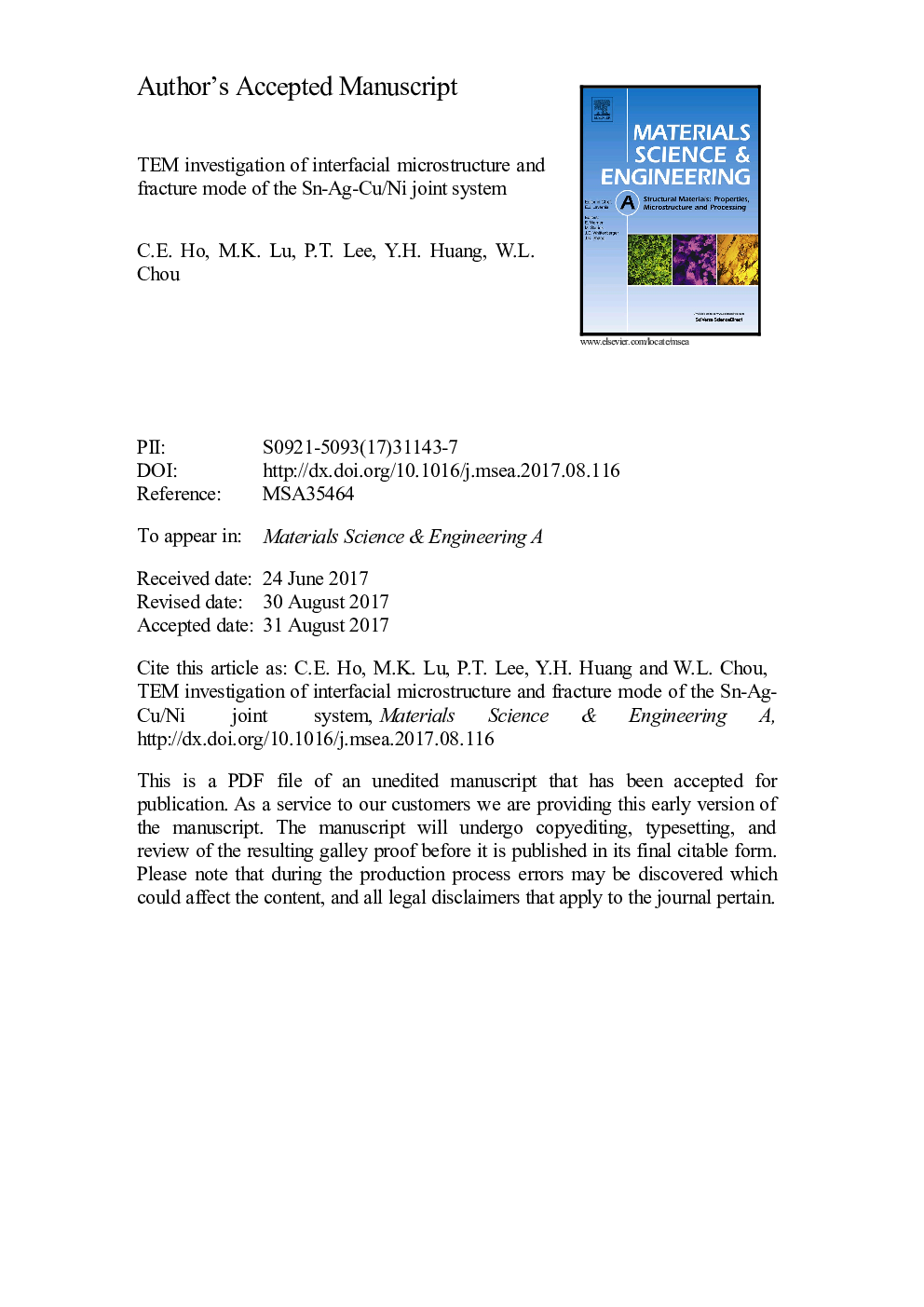| کد مقاله | کد نشریه | سال انتشار | مقاله انگلیسی | نسخه تمام متن |
|---|---|---|---|---|
| 5455188 | 1514637 | 2017 | 36 صفحه PDF | دانلود رایگان |
عنوان انگلیسی مقاله ISI
TEM investigation of interfacial microstructure and fracture mode of the Sn-Ag-Cu/Ni joint system
دانلود مقاله + سفارش ترجمه
دانلود مقاله ISI انگلیسی
رایگان برای ایرانیان
کلمات کلیدی
موضوعات مرتبط
مهندسی و علوم پایه
مهندسی مواد
دانش مواد (عمومی)
پیش نمایش صفحه اول مقاله

چکیده انگلیسی
The effects of Cu concentration (x) on the interfacial microstructure between a molten Sn-3Ag-xCu alloy and an electrolytic Au/Ni/Cu multilayer and its mechanical reliability were investigated via transmission electron microscopy (TEM) and high-speed ball shear (HSBS) testing. The x values were 0, 0.3, 0.4, 0.5, 0.7, and 1.0 (wt%). An increase in x caused an interfacial intermetallic compound (IMC) transition from a dense (Ni,Cu)3Sn4 layer (x = 0 and 0.3) to the coexistence of (Ni,Cu)3Sn4 and (Cu,Ni)6Sn5 (x = 0.4 and 0.5), and to a dense (Cu,Ni)6Sn5 layer (x = 0.7 and 1.0) after soldering reaction at 250 °C for 2 min. An increase in the reaction time enhanced the IMC growth and induced the nucleation of a (Ni,Cu)3Sn4 nanolayer beneath (Cu,Ni)6Sn5 in the high x case. The TEM and HSBS characterizations showed that a single, thin (Ni,Cu)3Sn4 layer grown at the interface possessed better shear resistance than a single (Cu,Ni)6Sn5 layer, and the presence of a dual layer structure of (Cu,Ni)6Sn5/(Ni,Cu)3Sn4 substantially degraded the mechanical properties of the joint interface. These observations indicated that the Cu concentration in Sn-3Ag-xCu alloy plays a crucial role in the interfacial reaction, which, in turn, dominates the mechanical reliability of microelectronic joints.
ناشر
Database: Elsevier - ScienceDirect (ساینس دایرکت)
Journal: Materials Science and Engineering: A - Volume 706, 26 October 2017, Pages 269-278
Journal: Materials Science and Engineering: A - Volume 706, 26 October 2017, Pages 269-278
نویسندگان
C.E. Ho, M.K. Lu, P.T. Lee, Y.H. Huang, W.L. Chou,